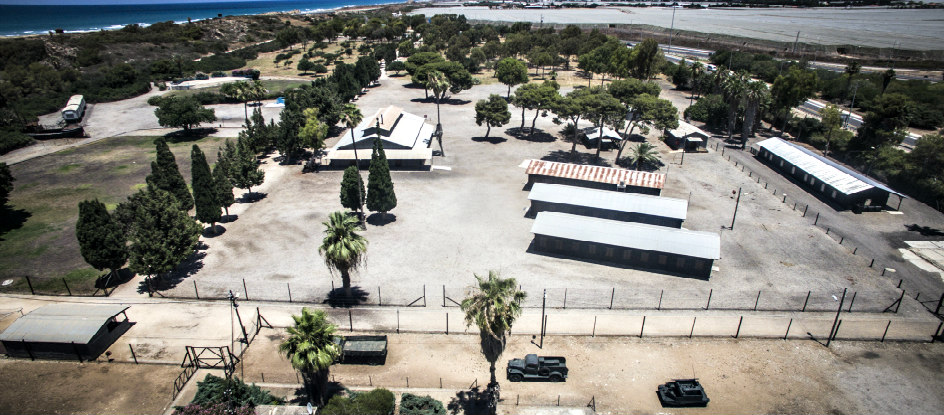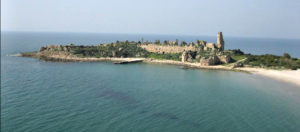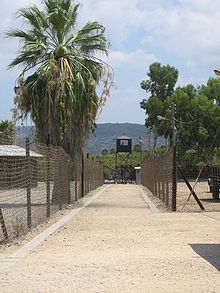Located near an ancient crusader fortress, the British used it to incarcerate Jews fleeing Nazi Europe and then refugees from the Holocaust. The Atlit Detention camp is an Israeli Heritage Site.

Succumbing to the threat of an oil embargo by Arab states, the British government introduced the infamous “White Paper” in March 1939. The contents of which restricted Jewish immigration to what was then called “Mandatory Palestine”. The restrictions imposed by the paper reduced Jewish immigration to 75,000 over a period of 5 years. In order to implement their policy, the British built the Atlit Detention Camp in the late 1930’s, near the ancient crusader fortress.

Located 20 kilometers south of Haifa on the coastal plain, the camp was surrounded by barbed wire and punctuated with guard towers. The men and women were separated by a barbed wire fence and forced to live apart. On arrival, the inmates were ordered to undress and allow themselves to be sprayed with DDT, an insecticide substance that was later found to have grave health and environmental consequences. No leisure facilities were provided and one of the major difficulties faced by the inmates was boredom.

Initially, most of the immigrants (referred to as Ma’apilim in Hebrew) were refugees fleeing from Nazi occupied Europe. Many of the refugees managed to evade the British blockade with the help of Aliyah Bet, a Jewish clandestine network that was established in 1934 to help “illegal” immigrants gain entry into the country. The organization later concentrated its efforts on circumventing British restrictions on Jewish immigration. In accordance with their policy, the British decided to send 5000 inmates to detention camps in Mauritius. On the 25th November 1940, the Hagganah responded by detonating a bomb in the hold of the Patria, one of the deporting ships. Miscalculating the size of the explosive charge, 216 of the 1800 refugees on board drowned. The survivors were reentered in the Atlit detention camp and not deported.
The Atlit Detention Camp was shut down in 1942, but reopened again in 1945 at the end of WWII.
In October 1945, the Hagganah broke into the camp and released 200 detainees in a raid planned by Yitzhak Rabin. As a result of this incident, the British decided to deport immigrants to DP camps in Cyprus, which were operational from 1946 until the establishment of the state in 1948. The bulk of immigrants from this latter period were holocaust survivors who came from DP camps in Europe.
Despite British restrictions on immigration, more than 122,000 people managed to overcome all obstacles and establish roots in their ancient homeland.
The 1960, Otto Preminger film “Exodus” starring Paul Newman and based on the book written by Leon Uris, relates to this period in Israel’s history. Though the film is dated, I recommend the film, as it has scenes within Israel that are easily recognizable but less developed and devoid of present day buildings. It can be viewed as a type of historical record.
Visiting Times : Sunday to Thursday from 09:00 to 17:00 and on Friday from 09:00 to 13:00
Entrance Fee : Adults 32 Shekels; Children and Seniors 27 Shekels.
Tours in either Hebrew or English must be pre-arranged
Contact Number : 04 9841980
____________________
Ron Traub is a certified Israeli tour guide and can be reached by email at rrdg
[To receive updates on more in depth articles on Israel and the Middle East, join us on Facebook or Twitter ]




